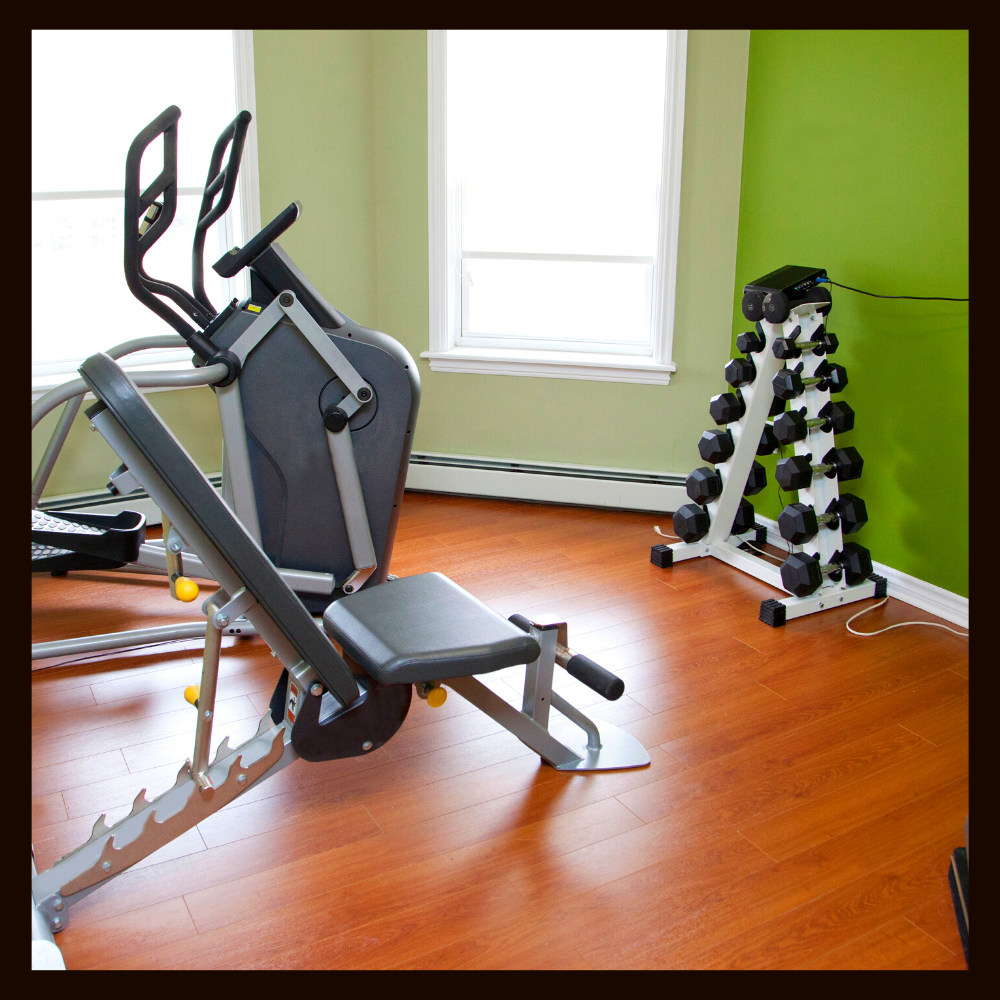How to Set Up Your Ideal Home Gym for Hassle-Free Daily Fitness
It’s almost an urban cliché that most gym memberships wind up expensively unused. Although subscriptions are taken out with the best intentions, maybe as a New Year’s resolution, fitting workouts into a busy modern lifestyle is in reality more difficult than people tend to assume.
Some days there’s simply no time to waste traveling for a workout. Other days the motivation isn’t quite there to leave home when the weather’s not on your side.
But the fact remains that regular exercise is excellent for both your physical and mental health, so it’s a shame to let that fitness ambition slide. For many people, the ideal solution is to set up a home gym, a project which offers many strong benefits over a paid membership.
Convenience and ease of use
A carefully built home gym makes it easier to fit a quick workout into your daily routine, without all the hassle of driving to a maybe distant location. And you needn’t miss out on the expert assistance and motivation of a gym trainer either. There are increasing numbers of online workout programs you can follow, offering both standard and personalized routines for all levels of fitness.
What’s more, a home gym needn’t cost a fortune – in fact, if you’re careful you can save big on membership fees. But to enjoy it to its best, you need to build a gym setup that fits perfectly into the way you prefer to work out. Here are the most important points to think about.
Find the best gym space
A basic home gym can be set up in surprisingly little space. At the smallest scale, enough room for a yoga mat lets you start with stretches and core exercises. For high-intensity interval training (HIIT), you’ll need a little more room to move, along with a floor that’ll stand up to the impact punishment. Example spaces include basements, converted attics, or even outdoor areas like porches or decks if your climate and situation allows.
If you’re planning on the full weights, treadmill, and rowing machine experience, you’re probably looking at an unused room like a home office, den, garage, or spare bedroom.
But however big or small, the key is to find an area of your home that you can call your gym and use at a moment’s notice, whether it’s a corner of your living room or a fully equipped dedicated space.
Stock up on the right gym gear
While a gym membership gives you access to a wide range of top-line equipment, most people only use a small proportion of it. A home gym can be kitted out quickly and relatively inexpensively if you only install the gear, you’ll need for your favorite workout styles. For example:
Yoga / Pilates: For simple yoga or Pilates workouts, a comfortable, high-quality mat is all you’ll need. More advanced routines and poses may call for a Pilates ball or exercise block, both of which can be bought inexpensively.
Boxing: With its combination of strength, endurance, and coordination training, boxing makes a great all-around workout to do at home. All you’ll need are some boxing gloves and a freestanding punching bag, or one suspended from a sturdy beam.
Cardio: An extensive cardio workout ups the ante a little in the amount of equipment you’ll need. Consider jump ropes, treadmills, elliptical machines, and HIIT straps depending on your preferred routine.
Strength training: This is the workout type that benefits from having the widest range of equipment available. However, you needn’t invest in everything all at once. Start small with weights and resistance bands, then move up through stability and BOSU balls to multifunctional squat and power racks as your workouts develop.
Swimming: If you have the space and the funds, adding a pool to your yard makes it easy to workout with laps or water aerobic exercises.
Dance: Fit a barre to an empty wall, along with full-length mirrors to monitor your form. Wooden floors make the best surface for dance and don’t forget to include a sound system for your choice of music.
Install a recovery zone
Recovery is an essential part of working out, giving your body the chance to develop, heal, and prepare for the next session with a reduced risk of injury. There are many ways you can enhance your recovery routine at a home gym.
At the simplest level, recovery aids like foam rollers and percussive massagers are great for soothing tensed up, sore muscle groups, while a massage chair does the same across your whole body. A small home sauna is excellent for boosting circulation to tired muscles, and modern self-contained units take up surprisingly little space.
At the high end, a home spa including whirlpool, infra-red cabinet, and steam room is a luxurious but practical investment if you have the space, the funds, and an advanced workout routine that justifies the installation cost.
Working to a budget: DIY your equipment
Plenty of useful, bargain-basement gym equipment can be found on Craigslist, Marketplace, and other second-owner sales sites. But if you want to make the absolute most of your budget, there’s plenty you can do in the DIY realm too.
From simple gear storage racks using reclaimed lumber, to DIY yokes, pulling blocks, and reverse hypers, if you’re handy with a few tools you can kit your home gym out with homemade equipment at a fraction of the cost of new gear.
Plan storage from the start
With a home gym you likely won’t have the luxury of unlimited space, so planning efficient storage for your expanding collection of gear is a must. Simple lidded storage containers can be used for yoga mats, recovery massagers, jump ropes, and so on, sliding away under a bed when you need to reclaim space.
If your gym is set up in a living room, a storage ottoman can keep your gear tidily out of the way when it’s not in use, and it also doubles up as a comfortable footrest for kicking back after your workout
For more heavy and bulky equipment like dumbbells, specialist hangers and racks are available, although a less expensive metal shelving unit makes an equally good option providing it can support the weight.
But whichever type of storage you choose, the key is to consider it at the start of your home gym journey rather than trying to retrofit extra storage after installation.
Making your home gym as energizing as possible
Installing a home gym that you’ll want to use is about much more than adding the right range of exercise equipment. Creating a comfortable but stimulating environment is key to getting the most out of the space you’ve built. Here are some important home gym ideas to consider when putting your design together.
Good light: No one wants to work out in a gloomy and claustrophobic space. Allowing for plenty of natural light is ideal, but if necessary, make sure you have enough electric lighting overhead so you can see exactly what you’re doing as you exercise.
Mirrors: Full-length wall mirrors help you keep an eye on your form as you work out, giving you visual feedback on your movements so that you become your own instructor. Mirrors also make space feel larger, which can be highly valuable in a smaller home gym.
Gym Flooring: Interlocking gym flooring is easy to install and provides a firm, stable surface for exercising on, while also protecting your carpets, tiling, or floorboards underneath.
TV or tablet: A carefully positioned TV or tablet lets you watch your online workout lessons in comfort or can provide entertainment during longer sessions on equipment.
Sounds: Installing a music system can energize you for more vigorous workouts or provide a calming influence for yoga or stretches.
Tidiness is important: Your home gym should be available at all times so that you can fit an impromptu workout into a busy day. Don’t let it fill up with the clutter of daily life which could discourage your session. And even when you’re tired after a workout, prepare the space for its next use immediately after completing your recovery routine.
Add your medals: If you’re training for competition, displaying your past medals, trophies, and badges can help create that extra spark of motivation to keep your workouts on track.
Get the most out of your home gym
After all the work of setting up your home gym, don’t let the effort go to waste. Draw up a realistic workout schedule that you can stick to and set some solid goals you can work toward to keep your enthusiasm levels high. The best home gym is one that’s used as often as possible, so if you find your motivation starting to fall away, consider asking a friend to join your scheduled sessions, giving you no room to back out.
And don’t forget working out should be fun as well as beneficial to your health. If you’re not enjoying your sessions, a home gym gives you the freedom to change and develop the setup until you hit on the design that’s an ideal fit for you.
This article was originally published at Porch.com
To get more motivation like this and more, sign up to our email for updates, new blogs, features, and more. Be sure to check your inbox after signing up to confirm your email.

